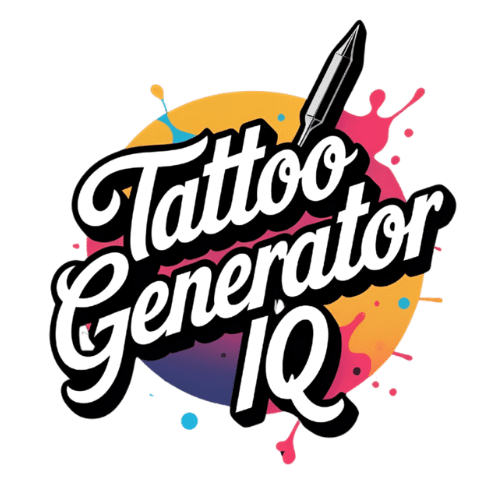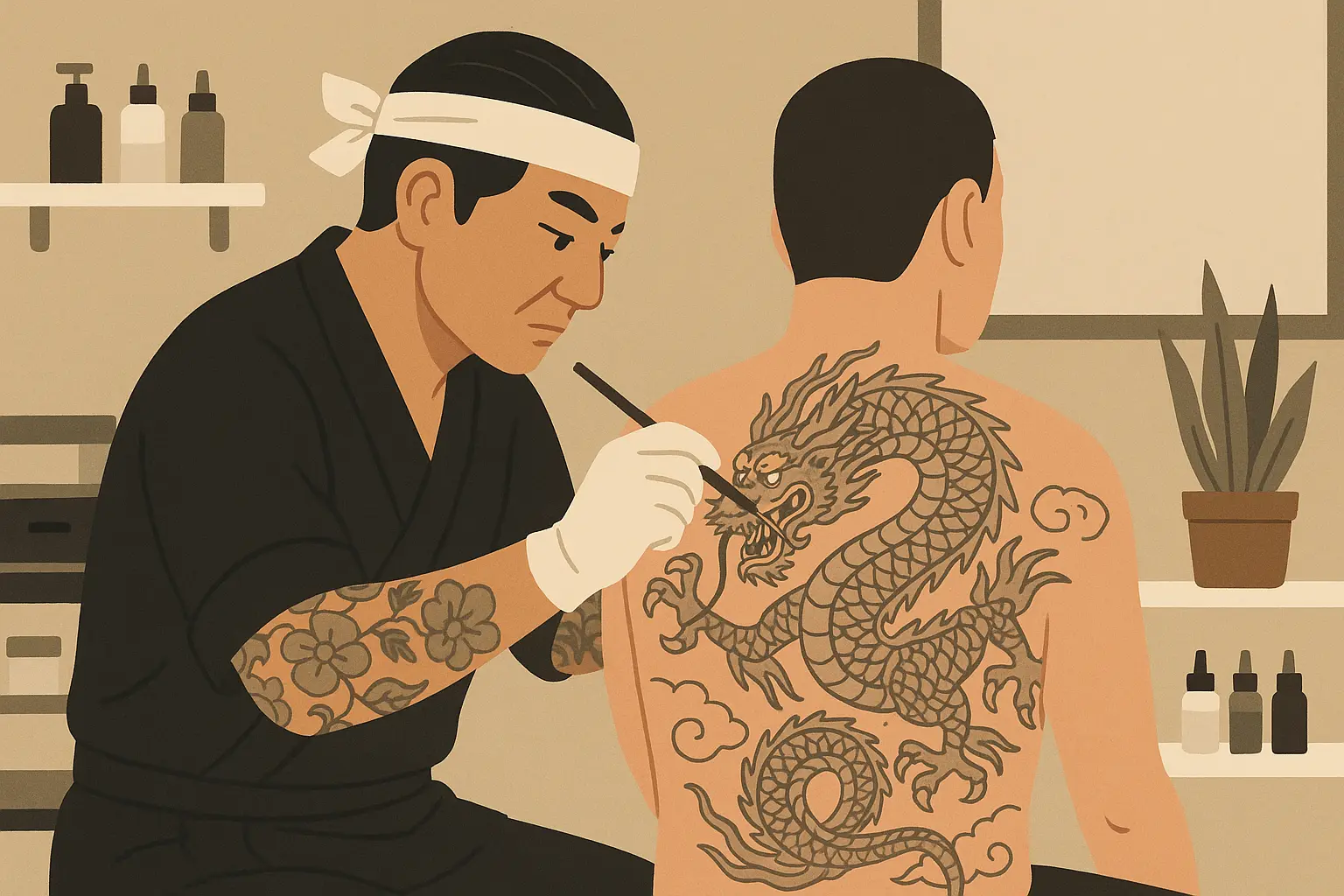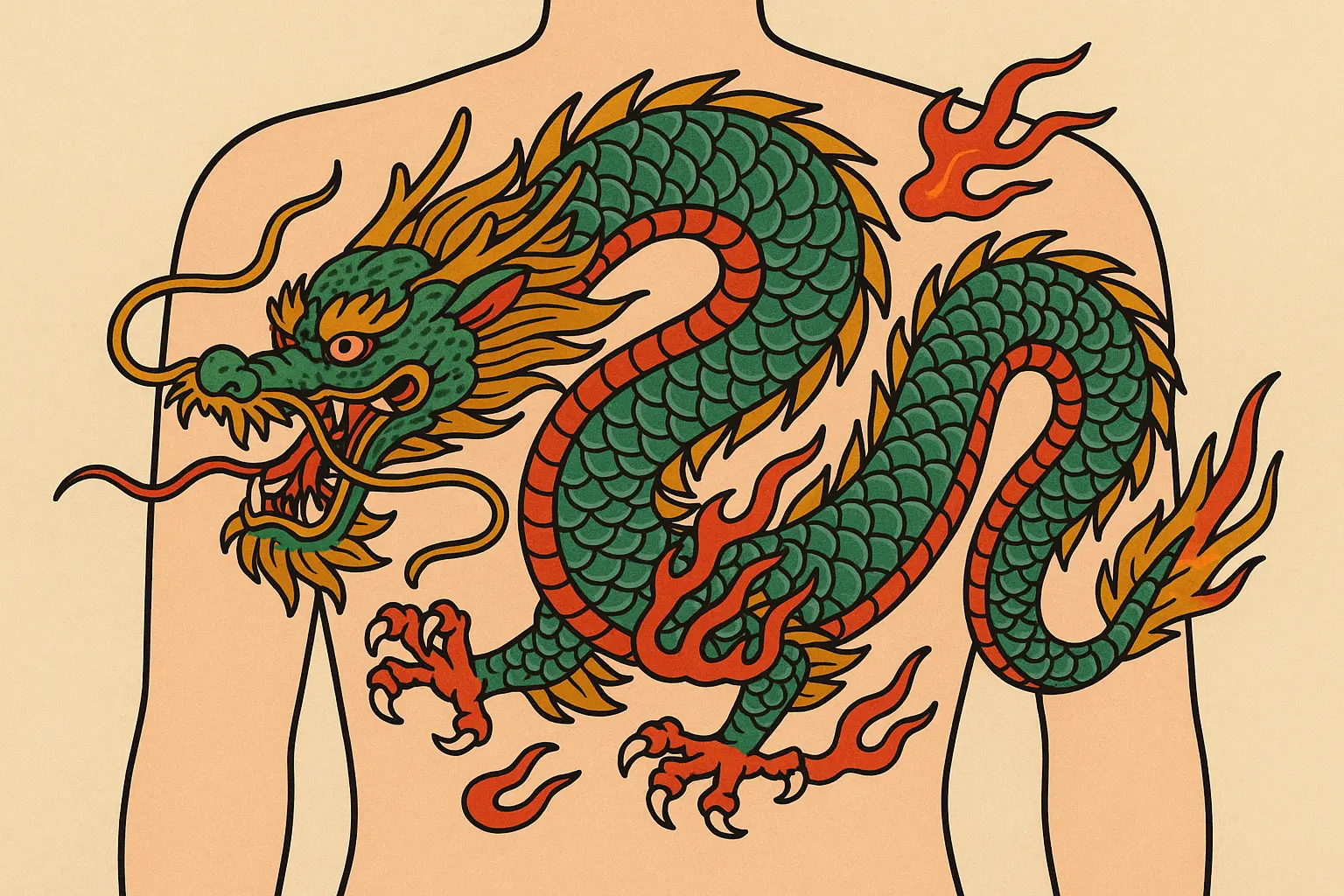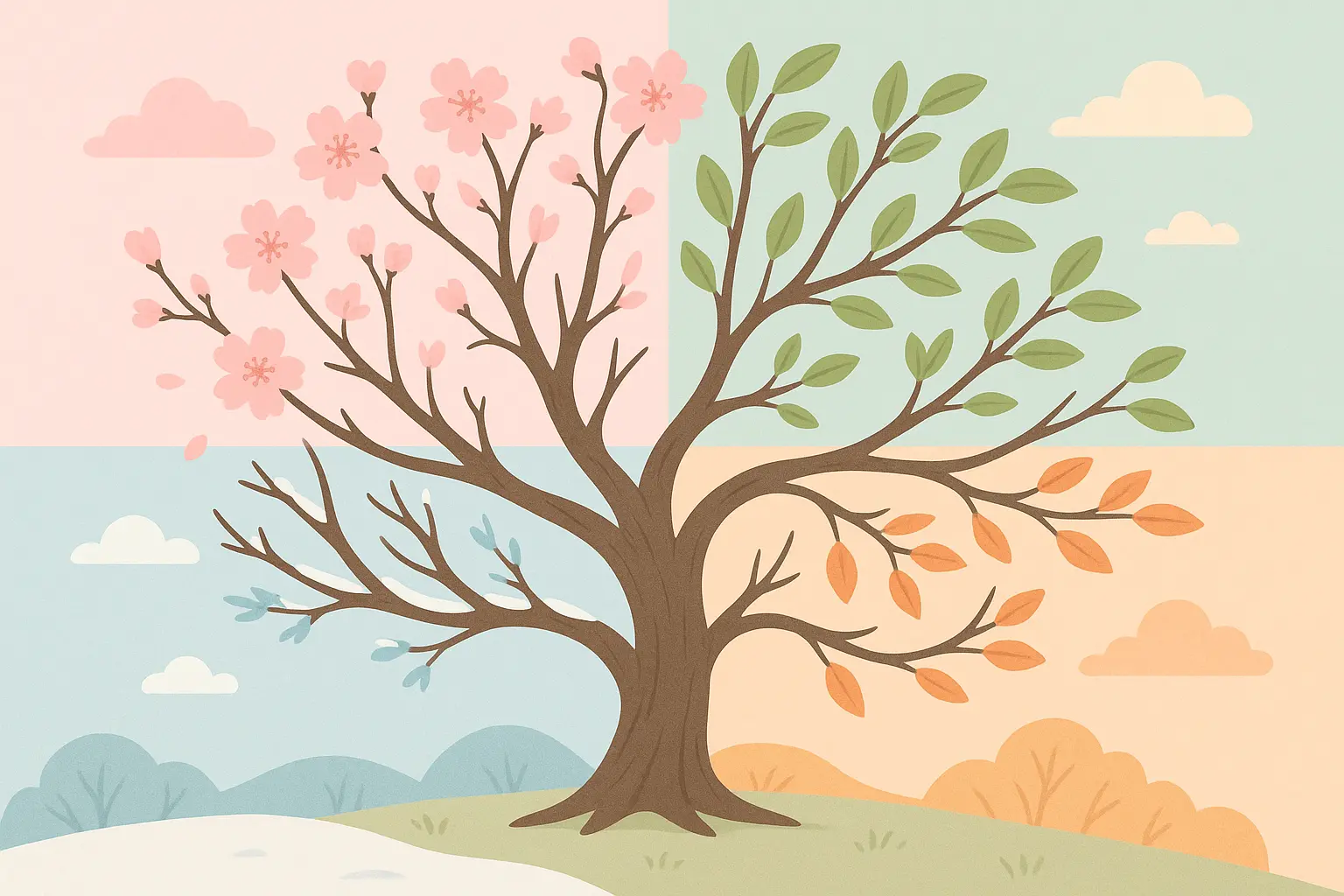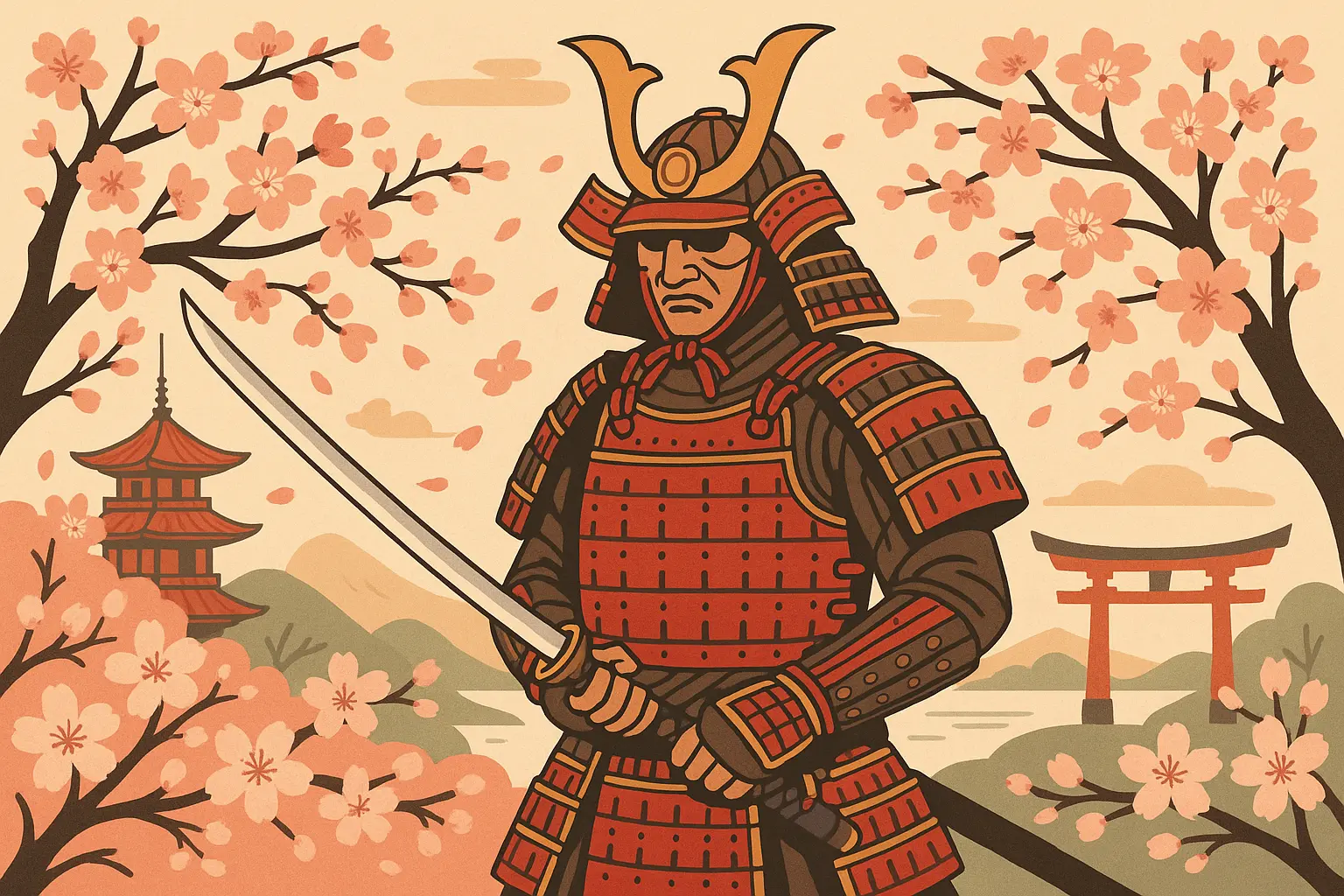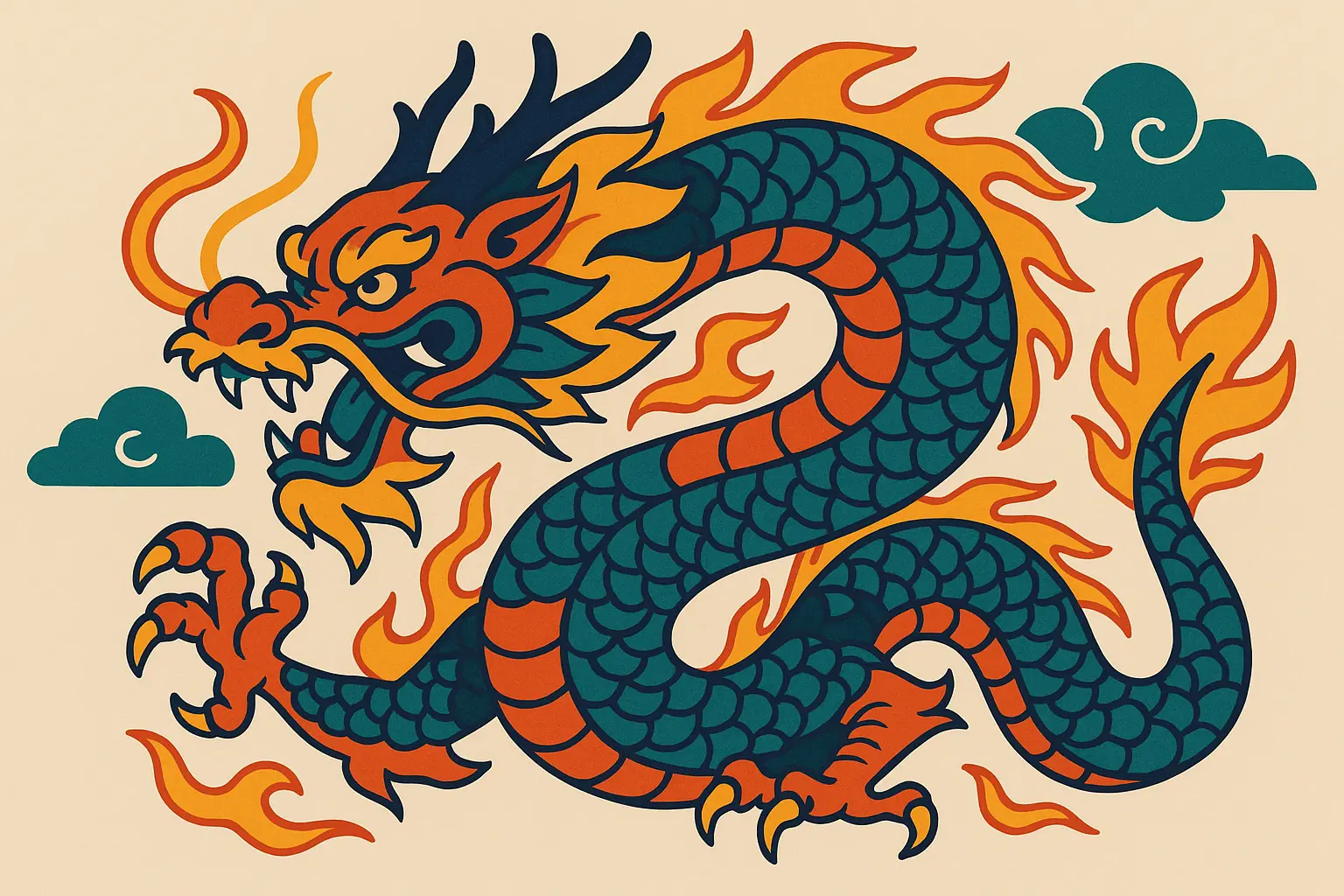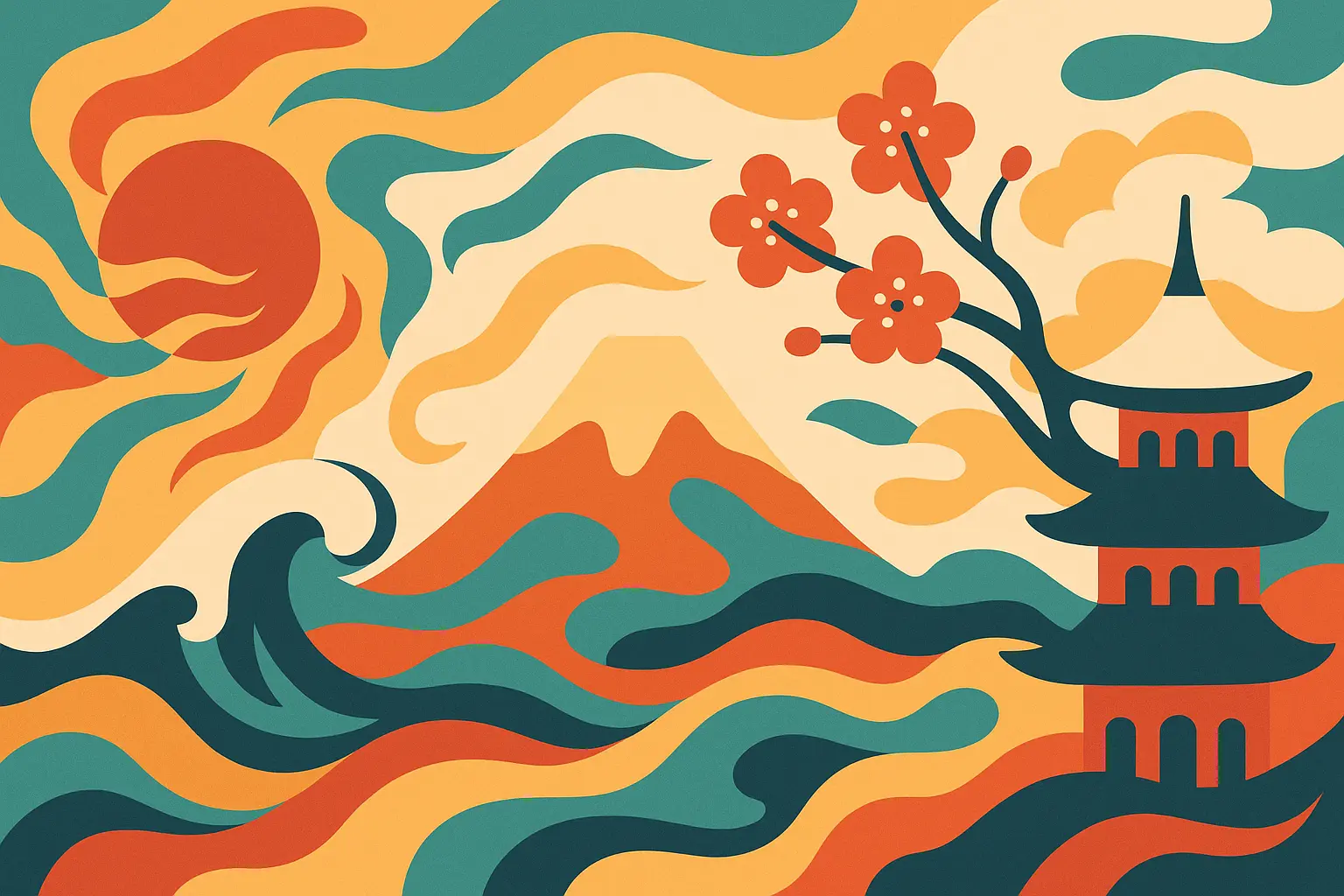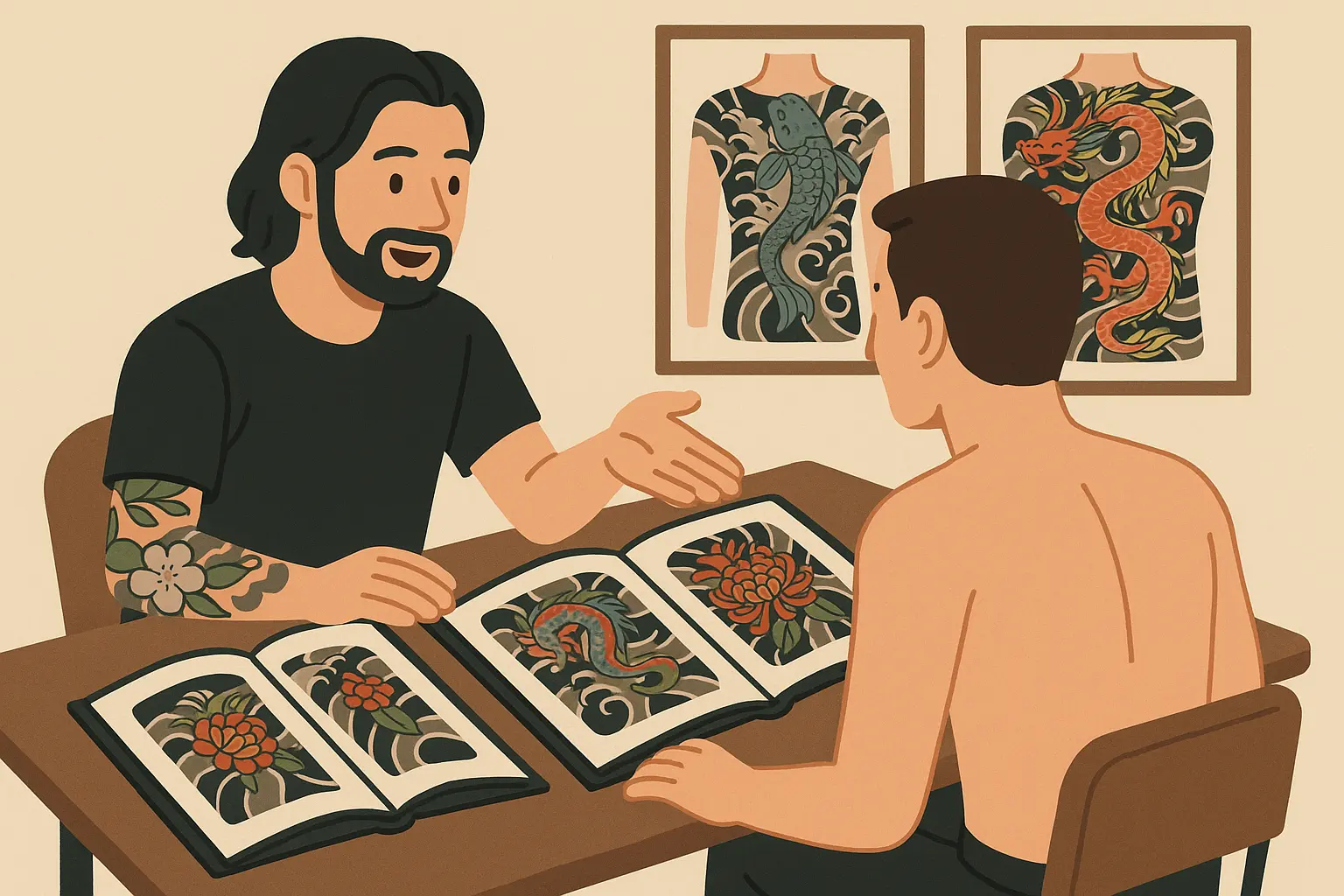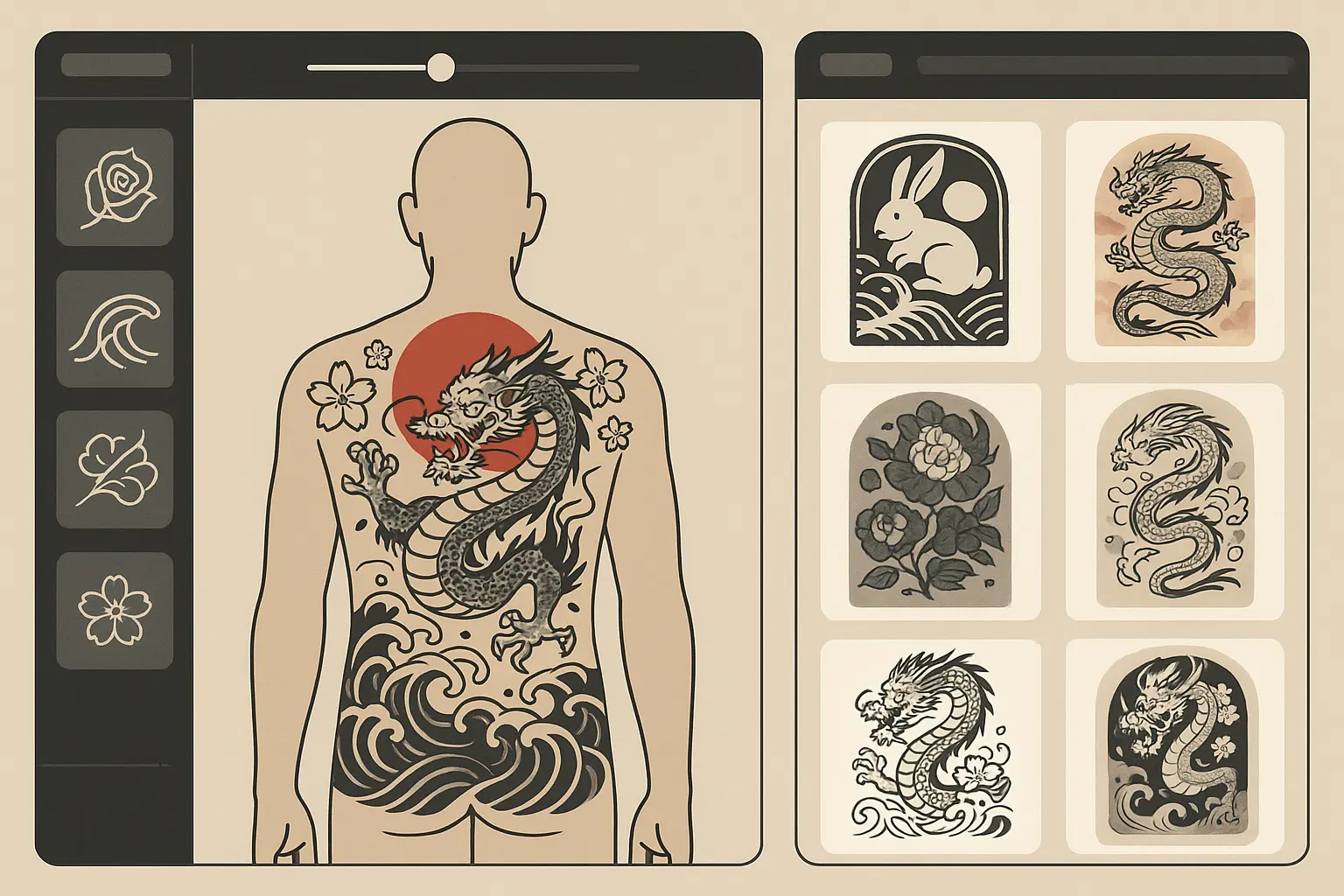25 Stunning Japanese Back Tattoo Designs That Will Transform Your Body Into Art
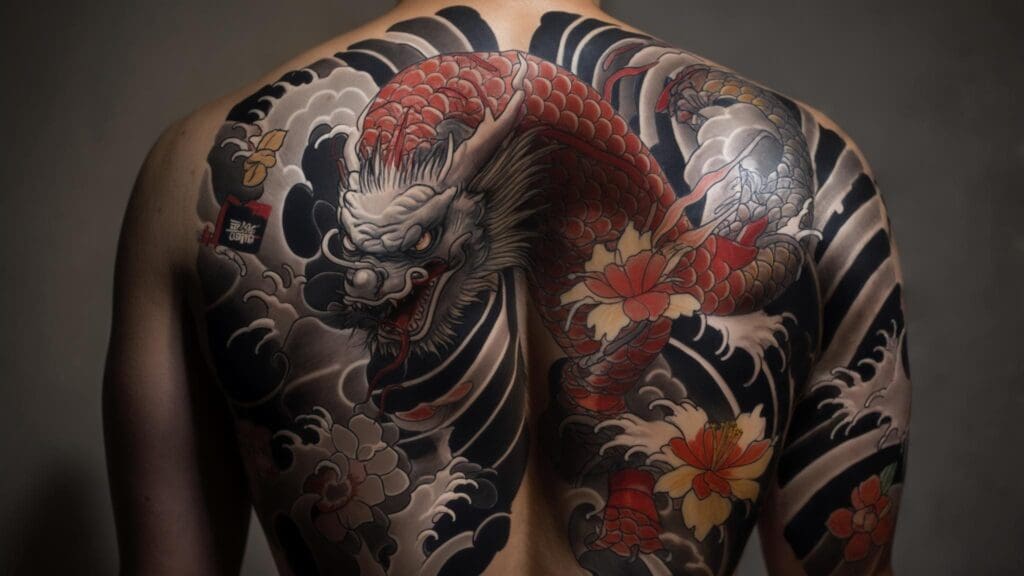
I’ve noticed way more people getting interested in Japanese back tattoos lately, and honestly, I get it. I remember walking into my first tattoo consultation five years ago, completely overwhelmed by the sheer magnitude of committing to a backpiece—the cultural weight, the financial investment, the months of planning ahead. That initial intimidation quickly transformed into deep respect for this ancient art form that transforms your entire back into a living canvas.
Getting a japanese back tattoo isn’t just about choosing a design; you’re embarking on a multi-year journey that will become part of your identity. These expansive masterpieces, known as backpieces, represent centuries-old traditions merged with cutting-edge techniques. Whether you’re drawn to traditional dragons or contemporary fusion styles, understanding your options has never been more crucial.
Table of Contents
- Stuff You Really Need to Think About First
- Traditional Japanese Mythology Designs (5 designs)
- Nature and Seasonal Theme Masterpieces (5 designs)
- Warrior and Samurai Themed Backpieces (4 designs)
- Spiritual and Religious Motif Collections (4 designs)
- Modern Fusion Style Innovations (4 designs)
- Contemporary Artistic Interpretations (3 designs)
- Design Analysis: Matching Styles to Your Lifestyle
- How to Not Go Broke Getting Inked
- How Tattoo Generator IQ Transforms Your Planning Process
- Real Talk: Final Thoughts
TL;DR
- Japanese back tattoos require 80-150 hours of work spread across 12-24 months, with costs ranging from $15,000-$40,000 (yeah, that’s not a typo)
- Cultural respect isn’t optional—do your homework so you’re not walking around with something culturally tone-deaf permanently etched on your back
- Traditional mythology designs offer the highest cultural authenticity but require artists who actually know what they’re doing
- Nature and seasonal themes are your safest bet if you work in a conservative office
- Modern fusion styles let you honor tradition without looking like you time-traveled from feudal Japan
- Finding the right artist is like dating, but with higher stakes and more permanent consequences
- Your coworkers will have opinions about warrior themes—fair warning
- Plan for touch-ups every 8-20 years because nothing lasts forever, including your perfect tattoo
Stuff You Really Need to Think About First
Look, before we dive into all these gorgeous designs, let’s have some real talk about what you’re getting yourself into. Japanese back tattoos aren’t like getting a small rose on your ankle. This is a life-changing commitment that’ll affect your daily routine, your bank account, and probably your relationship status. This section covers the stuff nobody mentions in those pretty Instagram posts.
Don’t Be That Person: Cultural Respect Edition
Japanese tattooing (irezumi) isn’t just pretty pictures—it carries serious cultural weight that extends way beyond looking cool at the beach. Traditional motifs have specific meanings that matter. Dragons represent wisdom and strength, koi fish symbolize perseverance, cherry blossoms represent life’s brief beauty. Understanding these meanings ensures your japanese back tattoo honors the tradition instead of making you look like a cultural tourist.
I’ve seen too many people rush into designs without doing their homework. The difference between appreciation and appropriation often comes down to actually giving a damn about what you’re putting on your body. Spend time learning what each element means before you commit—and no, skimming Wikipedia doesn’t count.
Let’s Talk Money (Because Nobody Else Will)
A full japanese back tattoo typically requires 80-150 hours of work spread across 12-24 months. That price tag of $15,000-$40,000? Not a joke. My back piece cost more than my car, and I’m still paying it off. This isn’t just a tattoo—it’s a multi-year commitment that’ll affect where you vacation, what you drive, and how much ramen you’ll be eating. Understanding how much tattoos cost helps you face reality before you’re in too deep.
| What You’re Really Looking At | Budget Version | Middle Ground | Go Big or Go Home |
|---|---|---|---|
| Total Hours | 80-100 hours | 100-120 hours | 120-150 hours |
| How Long This Takes Over | 12-15 months | 15-18 months | 18-24 months |
| Total Damage to Your Wallet | $15,000-$20,000 | $20,000-$30,000 | $30,000-$40,000+ |
| Hours Per Session | 4-6 hours | 6-8 hours | 8-10 hours |
| Times You’ll Question Your Life Choices | 15-20 sessions | 18-22 sessions | 20-25 sessions |
The Pain Game (Spoiler Alert: It Hurts)
Backpiece tattoos mean extended sessions across some seriously sensitive real estate—your spine, shoulder blades, and lower back. The healing process is no joke either. You’ll sleep on your stomach for months and hate every minute of it. Your shower routine becomes a 20-minute ordeal involving plastic wrap and lots of swearing. Buy button-up shirts now because pulling t-shirts over your head will suck during healing. Check out our pain level tattoo chart to see just how much fun you’re in for during those spine sessions.
Finding Your Artist (AKA The Most Important Decision You’ll Make)
Japanese back tattoos require artists who actually know what they’re doing with traditional techniques, cultural symbolism, and large-scale compositions. Not every talented tattoo artist can pull off authentic Japanese work—this style demands specific skills that you can’t fake. Don’t just scroll through Instagram; actually visit shops, talk to people, ask uncomfortable questions about their experience.
Reality Check from Marcus: Marcus, a software engineer from Seattle, spent eight months researching artists before finding Kenji Yamamoto, a Japanese-trained artist specializing in traditional irezumi. After three consultations and viewing 50+ portfolio pieces, Marcus committed to an 18-month dragon backpiece project. The thorough vetting process ensured he didn’t end up with a dragon that looked like it was drawn by a kindergartner with cultural authenticity to match. Two years later, he’s got a masterpiece that actually honors the tradition while telling his personal story.
Traditional Japanese Mythology Designs
These are the real deal—the designs that have been adorning bodies for centuries. If you want maximum cultural authenticity and don’t mind the stares, these five options represent the pinnacle of traditional Japanese tattooing. Fair warning: they require artists who actually know their stuff and wallets that can handle some serious damage.
1. Full Dragon Backpiece (Ryu)
Picture a massive dragon basically taking over your entire back. It’ll wrap around your spine like it owns the place, which honestly, after 100+ hours of work, it kind of does. The dragon’s body flows with your natural curves, complete with detailed scales that’ll make your artist question their career choices and you question yours. Traditional colors include gold, red, and black with blue water elements. This is the traditional japanese back tattoo that defines the whole art form.
What It Actually Means: Dragons represent wisdom, strength, and protection—not just looking badass
Time You’ll Spend in That Chair: 100-120 hours across 15-18 months of your life
Pain Reality Check: High, especially when they hit that spine
Your Boss’s Reaction: Depends on your boss, but probably not great
How It Ages: Like fine wine—bold lines and traditional colors actually get better with time
2. Phoenix Rising (Ho-oh)
A magnificent phoenix spreads its wings across your shoulder blades like it’s about to take flight, with tail feathers flowing down your spine. Fire elements and cherry blossom petals create movement that’ll make people stop and stare. This is one of the most popular japanese back tattoo choices for people going through major life changes.
What It Actually Means: Phoenix represents rebirth and renewal—perfect if you’re reinventing yourself
Time Investment: 80-100 hours across 12-15 months
Pain Level: Moderate to high, especially when they work those shoulder blades
Professional Acceptability: Upper back placement means you can hide it when you need to
Aging Reality: Pretty good, but those fine feather details might need touch-ups in 15-20 years
3. Koi Fish Waterfall Scene
Multiple koi swimming upstream against a waterfall, with one transforming into a dragon at the top. The water flows naturally across your back, creating movement that actually looks like it’s moving. Traditional blue and gray water contrasts with colorful koi that pop like crazy. Understanding the koi fish tattoo meaning makes this backpiece even more meaningful.
Cultural Significance: Koi represent never giving up, even when life’s current is trying to knock you down
Time Reality: 90-110 hours across 14-16 months
Pain Situation: Moderate, though those water shading sessions get intense
Professional Impact: Full coverage means strategic clothing choices for life
How It Holds Up: Excellent—water elements age like champions
4. Oni Demon Warrior
A fierce oni demon dominates your center back, surrounded by storm clouds, lightning, and traditional weapons. The demon’s expression is intense enough to make people cross the street, with supporting elements that fill every inch of space. This backpiece is for people who want protective symbolism through seriously intimidating imagery.
What It Means: Oni represent protection from evil and supernatural strength
Time Commitment: 85-105 hours across 13-16 months
Pain Factor: High because of all that black work and shading
Social Impact: People will have opinions, and they’ll share them
Aging Prospects: Pretty good—bold imagery holds well, though fine details might need touch-ups
5. Foo Dog Guardian Pair
Twin foo dogs (komainu) flank your spine, one mouth open and one closed, representing life’s beginning and end. Decorative clouds and geometric patterns create perfect symmetry in this japanese back tattoo design that’s all about balance.
Cultural Meaning: Foo dogs are spiritual bodyguards against evil
Time Investment: 75-95 hours across 11-14 months
Pain Level: Moderate, concentrated along that fun spine area
Professional Considerations: Symmetrical design might peek above shirt collars
Aging Quality: Excellent—symmetrical designs and bold lines age beautifully
Nature and Seasonal Theme Masterpieces
These are your safe-bet designs—culturally authentic but socially acceptable. Perfect for people who want meaningful Japanese symbolism without looking like they’re auditioning for a yakuza movie. These five designs celebrate Japan’s connection to natural cycles and tend to age gracefully while getting positive reactions from basically everyone.
6. Four Seasons Cherry Blossom Tree
A massive cherry tree takes over your entire back, with branches showing different seasons—spring blossoms, summer leaves, autumn colors, and winter bare branches. Petals drift across the design like they’re actually falling. This japanese back tattoo celebrates the Japanese concept of mono no aware—basically accepting that beautiful things don’t last forever.
What It Represents: Life’s brief beauty and learning to be okay with things ending
Time Reality Check: 95-115 hours across 14-18 months
Pain Situation: Moderate, though those detailed branches require serious precision
Professional Acceptability: Artistic nature makes people think “art” instead of “gang member”
Aging Truth: Pretty good, but you’ll need color touch-ups every 10-15 years
7. Mountain Landscape with Fuji
Mount Fuji dominates your upper back like the boss it is, with traditional Japanese landscapes flowing downward. Temples, pagodas, pine trees, and mist effects create depth that’ll make people think you’re wearing a painting. This backpiece captures Japan’s spiritual connection to sacred places.
Cultural Significance: Mount Fuji represents spiritual journey and natural beauty
Time Investment: 100-120 hours across 15-18 months
Pain Reality: Moderate to high during all that detailed landscape work
Social Reception: Landscape themes make people think “cultured” not “criminal”
Aging Characteristics: Excellent—landscapes age like fine wine with minimal maintenance
8. Ocean Wave and Storm Scene
Inspired by that famous Hokusai wave everyone recognizes, this design features dramatic ocean waves crashing across your back. Sea foam, spray effects, and traditional blue gradients create movement that looks alive. This backpiece connects to Japan’s island culture and relationship with the sea.
What It Means: Waves represent life’s constant change and natural power
Time Commitment: 80-100 hours across 12-15 months
Pain Level: Moderate during all that blue shading work
Professional Impact: Abstract nature makes it more office-friendly
Aging Reality: Good, though blue pigments might fade and need touch-ups
9. Bamboo Forest Path
Tall bamboo stalks create vertical lines across your back, with a path disappearing into the forest. Morning mist and filtered sunlight add atmospheric effects that create serious depth. This minimalist backpiece emphasizes Japanese aesthetics of simplicity and natural harmony.
Cultural Meaning: Bamboo represents flexibility, strength, and spiritual growth
Time Investment: 70-90 hours across 10-13 months
Pain Factor: Moderate, though some people find repetitive line work meditative
Professional Reception: Peaceful imagery gets positive reactions everywhere
Aging Quality: Excellent—simple lines and limited colors age beautifully
10. Traditional Garden Scene
A complete Japanese garden spans your back—stone lanterns, koi ponds, bridges, carefully arranged plants. The composition creates a peaceful, meditative landscape with details that’ll keep people staring. This comprehensive japanese back tattoos design celebrates Japanese garden design as spiritual practice.
Cultural Significance: Gardens represent harmony, balance, and spiritual contemplation
Time Reality: 110-130 hours across 16-20 months
Pain Situation: Moderate to high because of all those intricate details
Professional Impact: Artistic and peaceful themes are generally acceptable everywhere
Aging Truth: Good, but complex details might need maintenance every 12-15 years
Warrior and Samurai Themed Backpieces
These designs embody the martial spirit and honor code that defined Japanese culture for centuries. Perfect for people drawn to strength, discipline, and historical narrative. Fair warning though—warrior imagery might make some people uncomfortable, so consider your work environment and social circles before committing to walking around looking like a feudal badass.
11. Samurai Warrior in Full Armor
A detailed samurai in traditional armor dominates your center back, katana drawn and ready for business. Traditional war banners and cherry blossoms create supporting elements around the central figure. This backpiece requires an artist with serious skills to capture all those intricate armor details without making it look like a Halloween costume.
What It Represents: Honor, discipline, and warrior spirit
Time Investment: 90-110 hours across 13-16 months
Pain Reality: High because of extensive armor detail and shading work
Professional Considerations: Warrior imagery might make HR nervous
Aging Prospects: Good, though armor details might need touch-ups after 10-15 years
Real Talk from Sarah: Sarah, a corporate lawyer, almost went with a samurai warrior but switched to a geisha design (#12) after talking with HR about her firm’s dress code. While the samurai held personal meaning from her martial arts background, the geisha’s artistic and cultural significance provided the same connection to Japanese heritage while keeping things professional. She can wear business attire that partially conceals the design when needed, while still honoring her appreciation for Japanese culture.
12. Geisha with Traditional Elements
An elegant geisha in elaborate kimono takes over your upper back, surrounded by traditional fans, cherry blossoms, and decorative patterns. The flowing kimono fabric creates natural movement that’s mesmerizing to watch. This japanese back tattoo celebrates the artistic refinement of traditional Japanese culture without the intimidation factor.
Cultural Meaning: Geisha represent artistic refinement, beauty, and cultural tradition
Time Reality: 85-105 hours across 12-15 months
Pain Level: Moderate to high during detailed fabric and face work
Professional Reception: Artistic and cultural themes get positive reactions
Aging Truth: Fair—facial details and fabric patterns need periodic maintenance
13. Ronin Wanderer Scene
A masterless samurai travels a lonely path, silhouetted against a dramatic sunset. Traditional pine trees and mountain silhouettes create a melancholic but powerful composition. This backpiece tells a story of independence and personal journey through visual narrative that hits different.
What It Means: Independence, perseverance, and forging your own path
Time Commitment: 75-95 hours across 11-14 months
Pain Factor: Moderate, with lots of background shading
Professional Impact: Artistic storytelling approach is generally acceptable
Aging Quality: Excellent—silhouette work and landscapes age beautifully
14. Battle Scene with Multiple Warriors
An epic battle scene featuring multiple samurai in combat, with dynamic poses and weapons creating movement across your entire back. Traditional battle elements like smoke and fallen leaves add atmosphere. This complex backpiece represents the absolute pinnacle of narrative tattooing skill and will make people’s jaws drop.
Cultural Significance: Courage, conflict, and historical narrative
Time Investment: 120-150 hours across 18-24 months
Pain Reality: Very high because of the complex composition and extensive detail
Professional Considerations: Violent imagery might be problematic in certain settings
Aging Truth: Fair—complex scenes require significant maintenance over time
Spiritual and Religious Motif Collections
These are your universally respected options. Spiritual and religious motifs draw from Buddhist and Shinto traditions, emphasizing peace, meditation, and spiritual growth. They typically get positive reactions across cultures and professional environments while maintaining serious cultural authenticity and deep meaning.
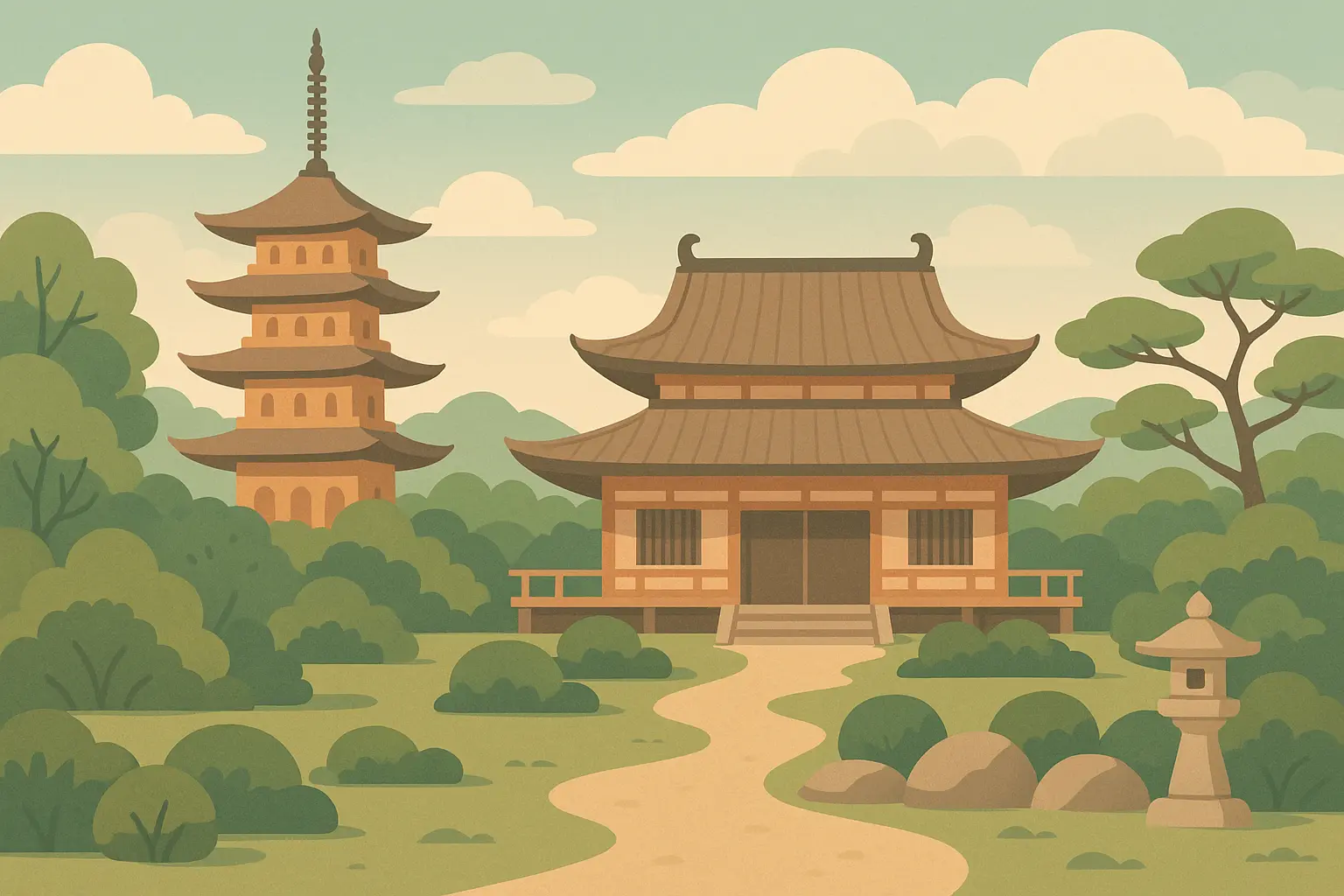
15. Buddhist Temple Complex
A detailed temple complex spans your back, featuring pagodas, gates, and traditional architecture. Monks, prayer flags, and spiritual symbols create a comprehensive religious landscape. This japanese back tattoo honors Buddhist philosophy and architectural beauty in a way that makes people think “spiritual” not “scary.”
What It Represents: Spiritual journey and enlightenment
Time Reality: 100-120 hours across 15-18 months
Pain Level: Moderate to high during all that architectural detail work
Professional Reception: Religious themes are generally respected everywhere
Aging Quality: Excellent—architectural elements age like champions
16. Zen Garden Meditation Scene
A peaceful zen garden with raked sand patterns, stone arrangements, and meditation elements. The minimalist approach creates calm, contemplative energy across your back. This backpiece embodies the Japanese aesthetic principle of ma (negative space) and wabi-sabi (finding beauty in imperfection).
Cultural Meaning: Meditation, mindfulness, and spiritual balance
Time Investment: 60-80 hours across 9-12 months
Pain Factor: Low to moderate because of simpler composition
Professional Impact: Peaceful, spiritual imagery is universally acceptable
Aging Truth: Excellent—minimalist design ages beautifully
17. Shinto Shrine with Torii Gates
Traditional Shinto shrine elements including torii gates, fox guardians, and sacred symbols. The composition emphasizes spiritual protection and connection to nature. This design connects to broader spiritual tattoo ideas while maintaining authentic Japanese religious symbolism.
What It Means: Connection to nature spirits and ancestral protection
Time Commitment: 80-100 hours across 12-15 months
Pain Reality: Moderate during detailed architectural and symbolic work
Professional Reception: Religious and cultural themes get respect
Aging Prospects: Good—traditional symbols and architecture age well
18. Mandala-Inspired Japanese Design
A fusion of traditional Japanese elements arranged in mandala format, featuring dragons, flowers, and geometric patterns radiating from a central point. This backpiece bridges Eastern spiritual traditions with Japanese aesthetic principles in a way that’s both meaningful and visually stunning.
Cultural Significance: Spiritual journey and cosmic harmony
Time Investment: 90-110 hours across 13-16 months
Pain Level: High because of precise geometric work and symmetry requirements
Professional Impact: Spiritual and artistic themes are broadly acceptable
Aging Reality: Good—geometric elements age well but might need periodic touch-ups
Modern Fusion Style Innovations
These designs bridge traditional Japanese symbolism with contemporary artistic techniques, creating fresh interpretations that honor cultural heritage while embracing innovation. Perfect for people who want cultural authenticity with modern aesthetic sensibilities, often providing better social acceptance while maintaining meaningful symbolism.
19. Neo-Traditional Japanese Dragon
A contemporary take on traditional dragon imagery using modern tattooing techniques, bold colors, and stylized elements while keeping the cultural authenticity intact. This japanese back tattoo style represents how traditional irezumi evolves into contemporary art without losing its soul.
What It Maintains: Traditional dragon symbolism with contemporary artistic expression
Time Reality: 85-105 hours across 12-15 months
Pain Factor: Moderate to high during color saturation work
Professional Reception: Modern artistic approach might be more socially acceptable
Aging Truth: Good—modern techniques and pigments offer improved longevity
20. Geometric Japanese Elements
Traditional Japanese motifs integrated with geometric patterns and modern design principles. Clean lines and contemporary composition while respecting cultural elements. This backpiece appeals to minimalist preferences while honoring Japanese symbolism—perfect for people who like their tradition with a modern twist.
Cultural Significance: Bridges traditional symbolism with contemporary artistic expression
Time Investment: 70-90 hours across 10-13 months
Pain Level: Moderate, with precision required for geometric elements
Professional Impact: Modern artistic approach gets positive reactions
Aging Quality: Excellent—geometric elements and modern techniques age beautifully
21. Watercolor Japanese Landscape
Traditional Japanese landscape elements rendered in watercolor tattoo style, with flowing colors and painterly effects creating a contemporary artistic interpretation. This innovative backpiece technique creates ethereal, artistic effects that look like someone painted directly on your skin.
What It Represents: Maintains landscape symbolism with modern artistic technique
Time Commitment: 75-95 hours across 11-14 months
Pain Reality: Moderate during extensive color blending work
Professional Reception: Artistic and contemporary approach is broadly acceptable
Aging Truth: Fair—watercolor effects might need touch-ups every 8-12 years
22. Minimalist Japanese Symbols
Clean, simplified versions of traditional Japanese elements using minimal lines and negative space. Contemporary interpretation of classic motifs with modern aesthetic sensibility. This approach aligns with broader simple tattoo ideas while maintaining cultural authenticity.
Cultural Meaning: Distills traditional symbols to their essential meaning
Time Investment: 50-70 hours across 8-11 months
Pain Factor: Low to moderate because of simplified composition
Professional Impact: Minimalist approach is highly professional and socially acceptable
Aging Reality: Excellent—simple lines and minimal color age like fine wine
Contemporary Artistic Interpretations
These designs push the boundaries of traditional Japanese tattooing while maintaining respectful cultural connections. They represent the cutting edge of artistic innovation, combining hyperrealistic techniques, abstract concepts, and mixed media approaches. Fair warning: they require the highest skill levels and offer unique personal expression opportunities.
23. Abstract Japanese Elements
Non-representational interpretation of traditional Japanese motifs, focusing on movement, color, and emotional expression rather than literal representation. This avant-garde japanese back tattoo approach appeals to contemporary art enthusiasts who want something completely unique.
What It Captures: The spirit and energy of Japanese aesthetics through abstraction
Time Reality: 60-80 hours across 9-12 months
Pain Level: Moderate during color work and shading
Professional Reception: Abstract art is generally acceptable across professional settings
Aging Truth: Good—abstract elements age well with minimal maintenance needs
24. Photorealistic Japanese Scene
Hyperrealistic rendering of Japanese landscapes or cultural scenes using advanced techniques to achieve photographic quality and detail. This backpiece represents the absolute pinnacle of technical tattooing achievement and will blow people’s minds.
Cultural Significance: Honors Japanese culture through artistic excellence and visual accuracy
Time Investment: 120-150 hours across 18-24 months
Pain Reality: Very high because of extensive detail work and precision requirements
Professional Impact: Artistic excellence is generally respected and admired
Aging Truth: Fair—photorealistic work requires significant maintenance over time
25. Mixed Media Japanese Collage
Combination of traditional Japanese elements with contemporary artistic techniques, creating a collage-like composition that tells a personal story through cultural symbols . This innovative backpiece allows for maximum personal expression within cultural frameworks.
What It Represents: Personal interpretation of Japanese cultural elements
Time Commitment: 95-115 hours across 14-17 months
Pain Factor: High because of varied techniques and complex composition
Professional Reception: Artistic and personal approach is generally well-received
Aging Reality: Fair—complex compositions require periodic maintenance
Design Analysis: Matching Styles to Your Lifestyle
Understanding how each design category performs across key considerations helps you make smart decisions about your backpiece investment. This breakdown examines cultural authenticity, time and financial requirements, pain levels, artist selection needs, and professional implications to guide your choice toward what actually makes sense for your life.
| Design Category | Cultural Authenticity | Professional Acceptance | Maintenance Level | Beginner Friendly |
|---|---|---|---|---|
| Traditional Mythology | Highest | Moderate | Low-Moderate | Hell No |
| Nature/Seasonal | High | Highest | Low | Yes |
| Warrior/Samurai | High | Low-Moderate | Moderate | Nope |
| Spiritual/Religious | High | Highest | Low | Yes |
| Modern Fusion | Moderate-High | High | Moderate | Yes |
| Contemporary | Variable | High | High | Definitely Not |
Cultural Authenticity Rankings
Traditional mythology designs (1-5) score highest for cultural authenticity, directly honoring centuries-old Japanese tattoo traditions. Nature and seasonal themes (6-10) maintain strong cultural connections while being more accessible to non-Japanese people. Modern fusion styles (19-22) require careful balance to avoid looking like cultural appropriation with a contemporary twist. Contemporary interpretations (23-25) offer the most flexibility but require the deepest understanding to maintain respectful cultural connection.
Investment Level Reality Check
Complex traditional scenes like the Battle Scene (#14) and Photorealistic Japanese Scene (#24) require the highest investment at 120-150 hours and $20,000-$40,000. That’s not a typo—you’re looking at used car money. Mid-range options like single dragons (#1) or geisha portraits (#12) typically need 85-110 hours and $15,000-$25,000. Minimalist approaches (#22, #16) offer the most accessible entry point at 50-80 hours and $8,000-$15,000, making them ideal for first-time backpiece recipients who aren’t completely insane.
Pain Management Reality
Designs with extensive black work like Oni Demon Warrior (#4) and detailed shading like Samurai Warrior (#11) present the highest pain levels because of prolonged sessions and intensive work. You’ll question every life choice that led you to that chair. Nature scenes with flowing elements (#6-10) generally involve moderate pain levels with better healing characteristics. Minimalist designs (#22, #16) offer the most comfortable experience with shorter sessions and simpler healing requirements. These japanese back tattoo designs vary significantly in how much they’ll make you suffer.
How to Not Go Broke Getting Inked
Strategic planning ensures your Japanese backpiece aligns with your career goals, personal meaning, maintenance capacity, and financial resources without forcing you to eat ramen for the next two years. This section provides frameworks for evaluating compatibility across different life circumstances and helps you make decisions that you’ll still appreciate when you’re old and gray.
Career Compatibility Reality Check
If you work in conservative fields like finance or law, consider designs that can be hidden with professional attire. Nature themes (#6-10) and spiritual motifs (#15-18) tend to be most acceptable when visible. Creative professionals often have more flexibility with warrior themes (#11-14) or contemporary interpretations (#23-25). Healthcare workers need to consider infection control requirements during healing phases—that plastic wrap routine gets old fast. Understanding tattoo aftercare secrets becomes especially crucial for backpiece healing management in professional environments.
| Career Field | Safe Choices | Think Twice About | Reality Check |
|---|---|---|---|
| Corporate/Finance | Nature (#6-10), Spiritual (#15-18) | Warrior (#11-14), Mythology (#1-5) | Full concealment preferred, period |
| Healthcare | Spiritual (#15-18), Minimalist (#22) | Complex detailed designs | Infection control is a real thing |
| Creative Industries | Pretty much anything goes | None typically | Lucky you |
| Education | Nature (#6-10), Contemporary (#23-25) | Intimidating imagery | Kids’ parents will have opinions |
| Government/Military | Traditional (#1-5), Spiritual (#15-18) | Abstract (#23), Fusion (#19-22) | Varies wildly by department |
Personal Meaning Alignment
People seeking spiritual growth often gravitate toward Buddhist temple complexes (#15) or Zen garden scenes (#16). Those overcoming challenges connect with koi waterfall scenes (#3) or phoenix designs (#2). People embracing personal transformation might prefer seasonal cherry blossom trees (#6) or ronin wanderer themes (#13). Cultural enthusiasts often choose traditional mythology (#1-5) for authentic connection to Japanese heritage.
Real Journey Story: David, a recovering addiction counselor, chose the Koi Fish Waterfall Scene (#3) to represent his personal journey of overcoming substance abuse and helping others do the same. The symbolism of koi swimming upstream against powerful currents perfectly matched his life story and professional mission. The 14-month process became part of his recovery journey, with each session marking progress in both his tattoo and personal growth. The design’s professional acceptability let him share its meaning with clients when appropriate, making it both personally significant and professionally relevant.
Long-term Maintenance Reality
High-maintenance designs requiring touch-ups every 8-12 years include watercolor styles (#21), photorealistic work (#24), and complex battle scenes (#14). Moderate maintenance options needing attention every 12-15 years include detailed geisha portraits (#12) and intricate garden scenes (#10). Low-maintenance choices with 15+ year stability include bold traditional dragons (#1), landscape silhouettes (#13), and minimalist symbols (#22). Plan for this maintenance now or cry about faded colors later—your japanese back tattoo needs love to stay vibrant.
How Tattoo Generator IQ Transforms Your Planning Process
Planning a Japanese backpiece is one of tattooing’s most complex decisions, involving cultural research, artistic vision, technical requirements, and serious money. Tattoo Generator IQ revolutionizes this process by providing professional-quality visualization tools specifically designed for large-scale Japanese tattoo planning, helping you make confident decisions before dropping serious cash on expensive consultations.
Comprehensive Style Exploration
Our platform’s 8+ authentic tattoo styles include specialized Japanese traditional and neo-traditional options with custom blending capabilities. You can experiment with traditional dragon designs (#1), then seamlessly blend elements with nature themes (#6-10) to create unique fusion pieces. This eliminates months of uncertainty about style direction and helps you visualize complex combinations before committing to expensive consultations. Whether you’re planning a japanese full back tattoo or exploring smaller japanese backpiece options, our tools provide comprehensive visualization support.
Cultural Education and Accuracy
Beyond generation capabilities, Tattoo Generator IQ provides comprehensive educational resources about Japanese tattoo culture, symbolism, and traditional techniques. Understanding the cultural significance of dragons versus phoenixes, or the proper way to incorporate seasonal elements, ensures your backpiece honors rather than appropriates this ancient art form. Our platform connects with resources like our traditional Japanese tattoo designs guide to ensure cultural authenticity.
Professional Artist Collaboration
Our platform generates artist-ready references with technical specifications, placement guides, and detailed breakdowns that facilitate productive consultations with Japanese tattoo specialists. Instead of struggling to describe your vision, you can present clear visual references that communicate your exact requirements, saving time and ensuring accurate execution.
Ready to start visualizing your perfect Japanese backpiece? Explore Tattoo Generator IQ’s Japanese design tools and begin your journey with confidence.
Real Talk: Final Thoughts
Look, getting a Japanese back tattoo is simultaneously the best and most insane decision you can make. It’s expensive, painful, time-consuming, and will change how you see yourself and how others see you. But if you do it right—with respect, research, and a really good artist—you’ll have something incredible that nobody can take away from you.
These 25 designs span everything from traditional irezumi honoring centuries of cultural heritage to contemporary interpretations that bridge ancient symbolism with modern artistic expression. The key to success lies in doing your homework, respecting the culture, and carefully matching design complexity to your lifestyle and goals.
Whether you choose the timeless power of a traditional dragon (#1), the peaceful contemplation of a zen garden (#16), or the contemporary fusion of geometric Japanese elements (#20), your back japanese tattoo should reflect both personal meaning and respect for the profound cultural traditions that inform this art form.
Remember that japanese back tattoos aren’t just tattoos—they’re multi-year journeys that become part of who you are. The investment in time, money, and physical commitment makes careful planning essential. Start with consultations with multiple artists specializing in Japanese work, and don’t rush the decision-making process. Your future self will thank you.
The growing popularity of japanese tattoo back designs reflects our deep appreciation for this art form’s combination of technical excellence, cultural depth, and visual impact. As you embark on this journey, approach it with the respect and dedication that this ancient tradition deserves.
Just don’t say I didn’t warn you about everything else—the pain, the cost, the weird looks, the obsession with other people’s Japanese tattoos, and the fact that you’ll probably become insufferably knowledgeable about traditional Japanese art. But hey, at least you’ll look amazing doing it.
